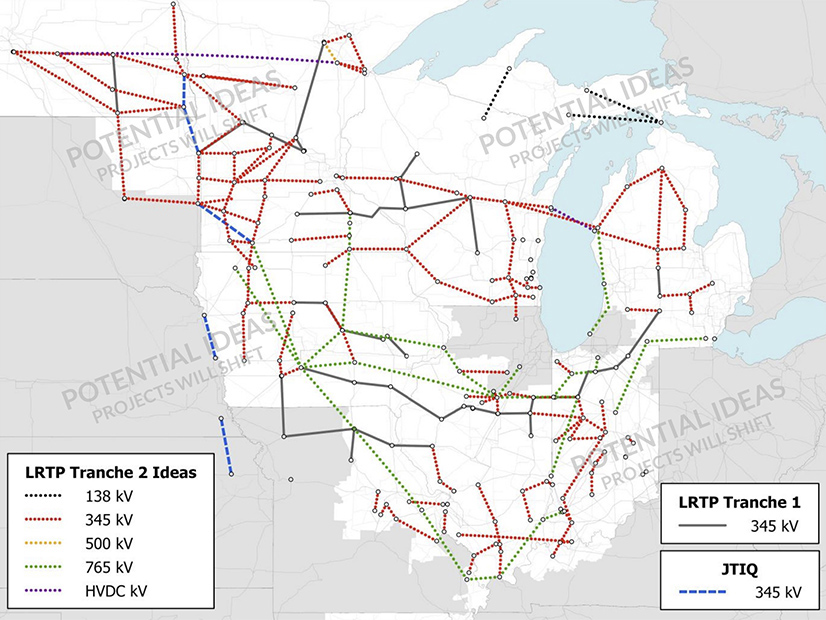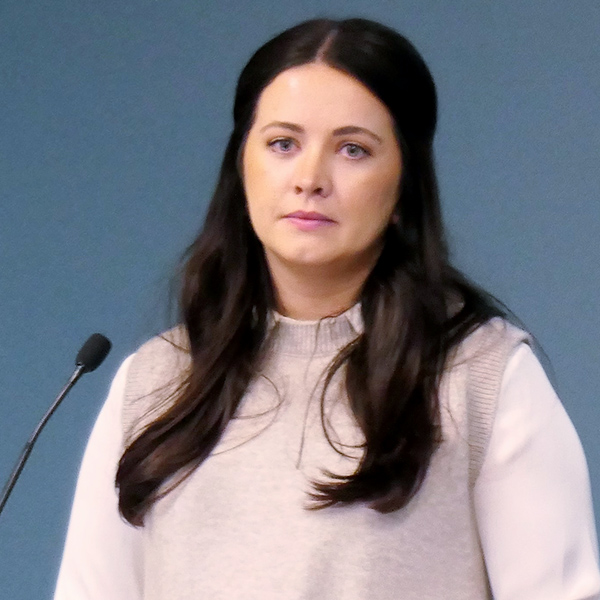Maryland’s largest county on Tuesday passed the state’s strongest building electrification law, requiring most new residential and commercial construction be powered by electricity or other carbon-neutral technologies.
The Montgomery County Council voted to require issuance of the regulations for most new construction by Dec. 31, 2026 (Bill 13-22).
Electrification requirements for residential buildings of four stories or more, affordable housing and schools were pushed back to the end of 2027.
The unanimous vote ended months of negotiations over the bill, which had originally called for the electrification standards to be issued by Jan. 1, 2024, and would also have required electrification for “major renovations and additions.”
The revised deadlines were among a series of amendments to the bill, which in its original form had triggered strong opposition from local builders, Realtors, chambers of commerce and utilities.
Removing the provisions on renovations and additions helped minimize some of the conflict, said At-Large Councilmember Hans Riemer, who led negotiations on the bill as chair of the Planning, Housing and Economic Development (PHED) Committee.
Figuring out “when a house gets triggered to have to transform all its existing systems to electric, when it may have a … gas-burning furnace, that is an extremely difficult process,” Riemer said. “The [county’s] Department of Permitting Services is not there yet, and they need some time.”
The committee also recommended exemptions for buildings that treat sewage or food waste, along with “the cooking portion of restaurants” and other commercial kitchens, such as kitchens in a church or community center. Farming and “farm alcohol production” — specific types of breweries — will also be exempt.
At-Large Councilmember Will Jawando, who co-sponsored the bill with Riemer, called the revised deadlines “a decent compromise. Obviously, we want to move as quickly as we can. … We want to send a strong message, passing this bill unanimously, that we need to move to all electrification. If this helps us get there, I think it’s something that is worth doing.”
Riemer also noted that about three-quarters of commercial buildings in the county are already all-electric, so that the electrification requirement will not hurt the county’s competitiveness for commercial development.
“We’re confident that the private sector is on a path already to make this very feasible for the residential sector,” he added.
Doug Siglin, policy advisor for the Chesapeake Climate Action Network, a local advocacy group, would have liked the council to stick with its earlier deadline, but he still sees the bill as “a very important policy step forward.
“We didn’t get everything we wanted, but we understand that’s the legislative process,” Siglin said. “In the big picture, we think it’s a hugely important policy.”
Flashpoints
With more than one million residents, Montgomery County is Maryland’s most-populous county and, arguably, its most progressive. The county’s Climate Action Plan calls for an 80% reduction in communitywide greenhouse gas emissions below 2005 levels by 2027 and a 100% reduction by 2035.
The Montgomery County school district also has one of the largest electric bus fleets in the nation. (See Md. County’s Electric School Buses to Provide Synch Reserves for PJM.)
But building electrification and green building in general have long been flashpoints in Maryland, with successive attempts to pass a statewide green building code turned back in the legislature. Most recently, green building provisions in the Maryland Climate Solutions Now Act (SB528) were watered down and replaced with a mandate for the state Public Service Commission to undertake a study on the issue. The PSC’s study, which will include cost and grid capacity evaluations, is to be completed by the end of 2023. Gov. Larry Hogan (R) allowed the bill to become law without his signature. (See Md. General Assembly Sends Climate Solutions Bill to Hogan.)
The building electrification law passed Tuesday represents the council’s attempt to balance the concerns of the county’s business community with its climate goals. In a Nov. 15 report, the PHED Committee said that businesses groups and individuals raised concerns about the law’s impact on housing and building costs and whether the grid would be able to manage the increased capacity electrification would cause.
Other issues included who would pay for needed grid upgrades and the potential for delays in constructing large residential developments.
In an email to NetZero Insider, Pepco (NASDAQ:EXC) spokesman Ben Armstrong said the utility shares “similar decarbonization goals as our communities in Montgomery County.” But he also pointed to the need for the PSC study that would outline “system investments necessary to support an all-electric building code,” while maintaining reliability and affordability for all customers.
“We appreciate the increasing demands on the grid as we partner with the county to electrify and decarbonize more energy sectors,” Armstrong said. “The grid is a dynamic and integral part of enabling carbon reduction, and we are fully committed to supporting those efforts.”
Councilmember Sidney Katz said pushing back the electrification deadlines should give all stakeholders more time. “The timing was such a concern for me, and what [building electrification] does to the grid because the grid does not work on a county-by-county [basis or for] the Washington, D.C. area. It works on a regional basis, and we needed to make certain that what we were doing … would be done with that in mind.”
The Dec. 31, 2026 deadline is the same as in Washington, D.C.’s mandate for new construction to be net zero.
Amendments to the Montgomery County law will also require the county executive to provide the council with a report on the PSC findings by September, 2024.
Still another amendment ensures that the final regulations will not go into effect without “active” approval of the council. Council President Gabe Albornoz said requiring the council’s approval would provide “another check and balance” for any final changes, based on the PSC study or any other analyses.
Fireplaces and Grills
The new law also puts Montgomery County on the front lines of what has become a national debate on whether natural gas hookups should be allowed in new construction. According to the Sierra Club, 68 cities and counties in California have banned natural gas in new construction. A counteroffensive by the natural gas industry has resulted in 20 states passing laws prohibiting such bans.
Maryland has not passed a law prohibiting bans or natural gas hookups.
But issue remains divisive. The only amendment the council did not pass unanimously was a proposal from Albornoz to also exempt residential gas fireplaces and outdoor grills, which he argued are “amenities that are popular among certain home builders and that homeowners are looking for.” Gas fireplaces and grills also produce fewer emissions than wood- or charcoal-fired alternatives, he said.
County officials raised concerns that these exemptions could create a loophole that would allow natural gas hookups in new construction, but Riemer said few would be likely to exploit it. “The expense that would be involved in trying to switch out … a brand new, fully functional, very effective electric heating system with a gas system is probably like the biggest waste of money you could imagine doing as a homeowner,” he said.
But Jawando and Council Vice President Evan Glass spoke against the exemption. “It goes against the meaning and what we’re trying to do here and gives an exemption to people who are the wealthiest and able to do this,” Jawando said. “It’s not good for racial equity and social justice reasons, not good for the intent of the bill.”
Gas-fired fireplaces and grills are “aesthetic amenities,” Glass said. “If the goal of this overall bill is to minimize or quite frankly eliminate some of these uses, then I can’t justify doing it or allowing it just for an aesthetic amenity.”
Councilmember Tom Hucker joined Jawando and Glass in opposing the amendment, which passed on a 6-3 vote.
Councilmember Craig Rice voted for the exemption but also stressed the need for the council to focus on “the reality that many people are living in buildings that continue to suffer from lack of environmental justice, and it will be important for us to make sure that as we continue this onboarding process of electrification, that access is provided to those in our community who are of lower socioeconomic status and who are in existing buildings.”
The positive changes from electrification must be “equitable and accessible to all of our residents,” he said.
CCAN’s Siglin is hopeful that by the time the county releases the regulations at the end of 2026, the definitions of “major renovations and additions” can be clarified. The bill is silent on the issue, which leaves the door open for county officials to “figure out what definitions they want and come back with [them],” he said.
Councilmember Andrew Friedson sees building electrification as inevitably leading to a “conversation about the grid. Ultimately, we need a greener grid, and we have started that conversation in a very public and very substantive way, working collaboratively with industry, with our utilities. We all recognize that for this to make the impact we need it to make, that we want it to make, that a sustainable future requires, we need to have the type of grid that is electric; that doesn’t burn fossil fuels nearly at the extent it is now.”
 SPP’s final Markets+ service offering | SPP
SPP’s final Markets+ service offering | SPP

